Fox News Flash top headlines for June 25
Fox News Flash top headlines are here. Check out what's clicking on Foxnews.com.
Summer is here, which means the beach season is already in full swing.
While beach days can be full of fun, it is important to be careful, especially with dangerous rip tides and currents.
Recently, three Alabama men lost their lives after getting caught in a rip current off Panama City Beach, Florida, authorities there said.
BE WELL: PREVENT DROWNING WITH THESE CHILD SAFETY WATER TIPS
A day before that, a Pennsylvania couple vacationing with their six children drowned after getting caught in a rip current off Hutchinson Island in Florida, according to the Martin County Sheriff's Office and as Fox News Digital reported.
That brings the total number of surf-zone fatalities in the United States this year to 16, according to the National Weather Service, as of right now.
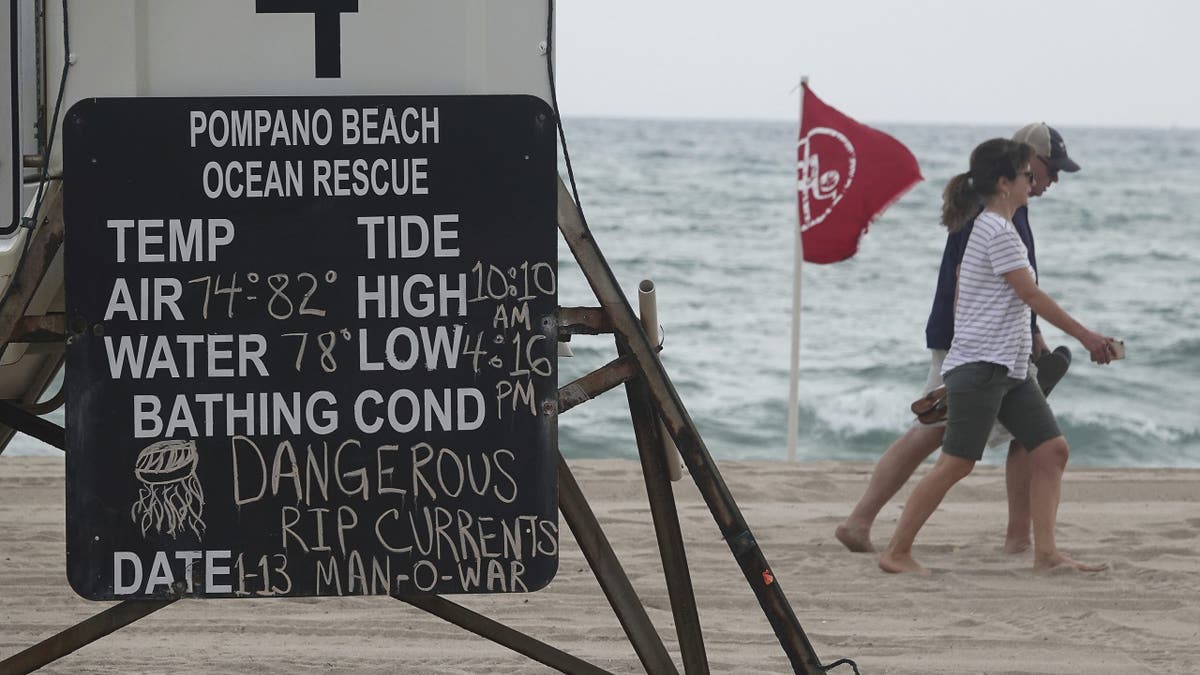
There have been 16 surf-zone fatalities in the United States so far this year, according to the National Weather Service. (Joe Cavaretta/South Florida Sun-Sentinel via AP)
Fox News Digital reached out to water safety experts in order to share tips with others to help prevent trips to the beach from ending in tragedy.
The experts shared a range of advice and insights.
Read on for seven tips you must know.
1. Know the warnings when first arriving at the beach
"The first thing every beachgoer should do is pay attention to the conditions of the beach when you arrive," Chris DeJong, a former national champion swimmer and the Atlanta-based founder of the Big Blue Swim School, a national chain of swim schools for children, told Fox News Digital last year about the issue.
"Make sure to check for flag warnings," he also said.
A yellow flag, DeJong said, means that rip currents are expected, while a red flag means a "dangerous" rip current is expected.
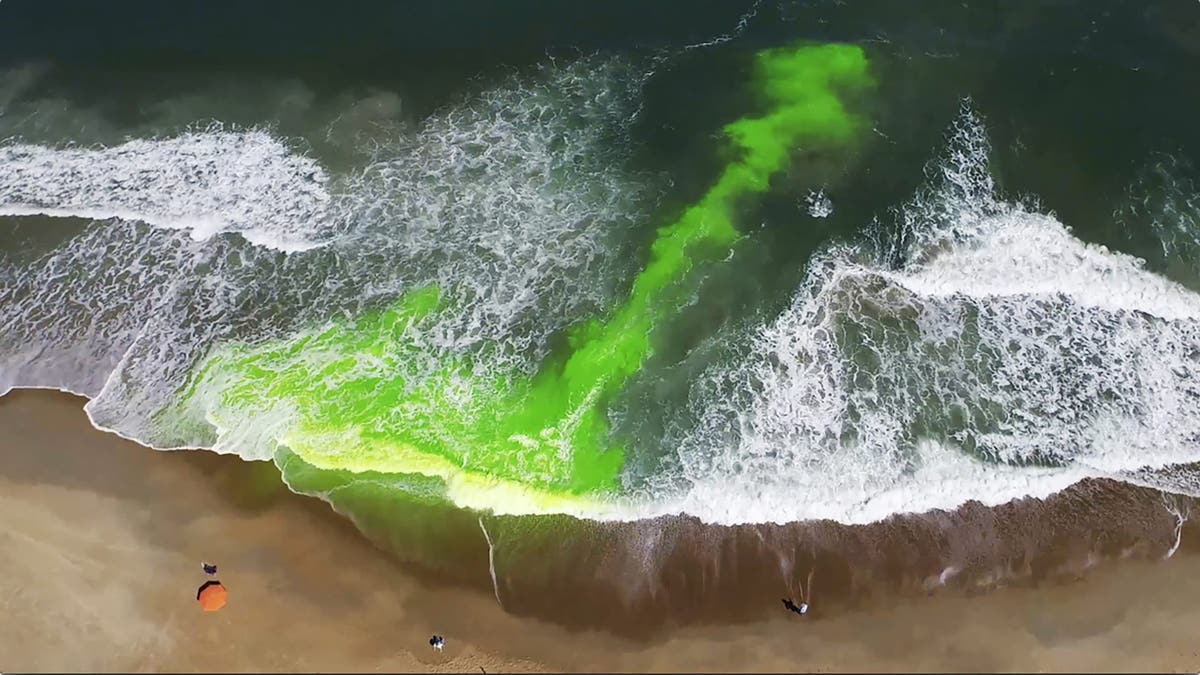
In the above image, green dye is used to show a rip current in the water. (NOAA via AP)
A rip current, which is also called a riptide, is defined as "channelized currents of water flowing away from shore at surf beaches," according to the website for the National Weather Service.
GRANGER SMITH'S WIFE, AMBER SMITH, PARTNERS WITH DROWNING PREVENTION ORGANIZATION TO DRIVE AWARENESS
"Typically, they form at breaks in sandbars, and also near structures, such as jetties and piers, as well as cliffs that jut into the water," the site also noted.
"Rip currents are common and can be found on most surf beaches, including the Great Lakes and Gulf of Mexico."
2. Swim in the presence of lifeguards
Lifeguards "are trained to spot rip currents," DeJong said, and "they are trained in rip current rescues and have the necessary equipment to help."
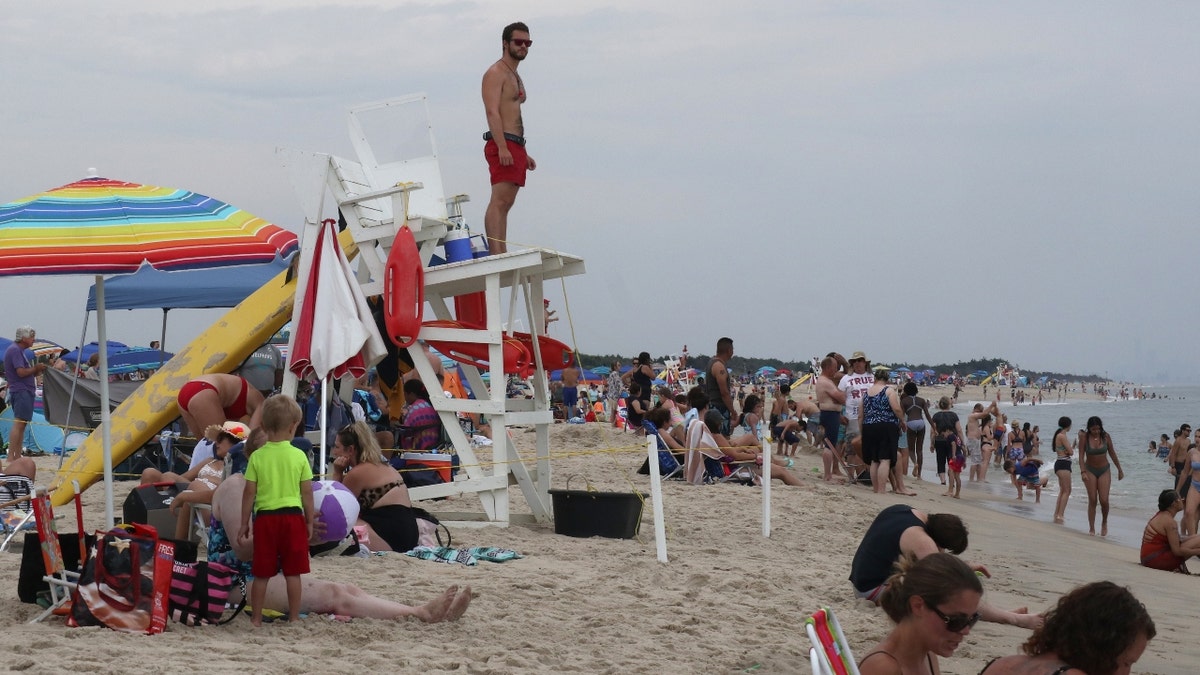
It is always recommended to swim in the presence of lifeguards and to follow all of their directions, according to authorities. (Gary Hershorn/Getty Images)
Swimmers attempting on their own to rescue someone from a rip current is also a dangerous move, according to Gerry Dworkin, a consultant and expert on water rescues and safety for Maine-based Lifesaving Resources.
"Leave the rescue to the professionals," he said.
RETIRED DOCTOR RETURNS TO LIFEGUARDING AFTER 50 YEARS: ‘ONE OF THE BEST JOBS’
While lifeguards are important, they are "an additional layer of protection," registered nurse Mary Jo Quintero told Fox News Digital. She is water safety coordinator at Valley Children's Healthcare in California.
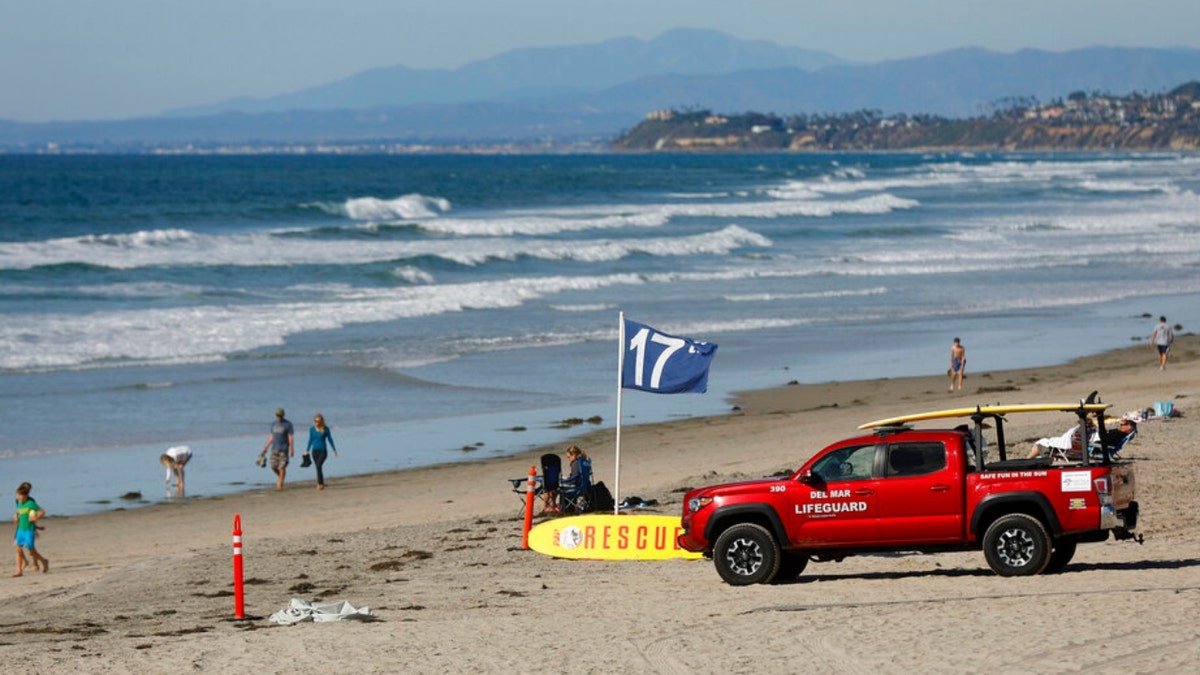
Lifeguards are specially trained to rescue people caught in rip currents. A lifeguard, however, "does not take the place of adult supervision" for kids, said one professional. (K.C. Alfred/The San Diego Union-Tribune via AP)
"The lifeguard does not take the place of adult supervision for children," she added.
3. Remember that calm water is not always safe
A supposed calm patch of water actually could be a potentially deadly rip current, Dworkin said.
"To the untrained observer, the actual rip current appears to be calm water, when in reality it looks calm [only] because a channel has been created between the sandbars and that channel is forcing the water back out to sea," he said.
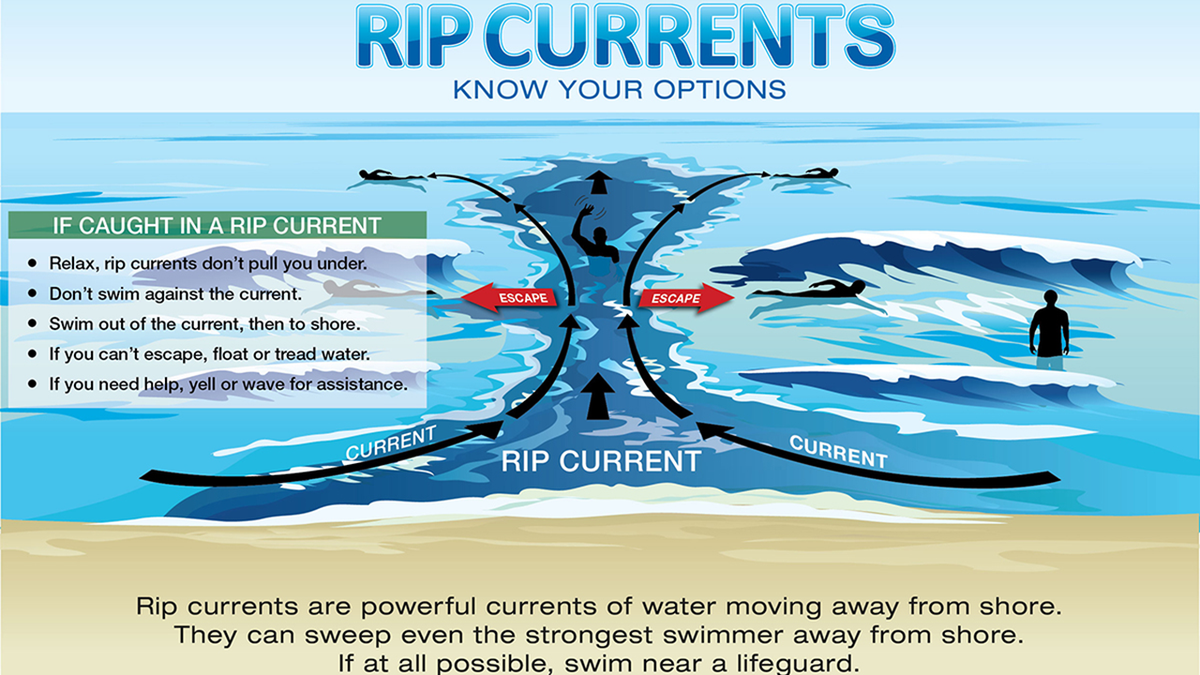
This graphic from the National Weather Service shows what to do if caught in a rip current. The best way to escape is to swim parallel to the shore out of the current's flow. (U.S. National Weather Service)
Rip currents, Dworkin said, are the cause of 80% of ocean lifeguard interventions.
4. If caught in a riptide, swim parallel to shore, then work your way in
"To escape a rip current, do not try to fight your way against the water flow," Dworkin said.
LIFEGUARD, 16, SAVES WOMAN FROM DROWNING FIRST WEEK ON THE JOB
Instead of fighting a rip current and attempting to swim to shore, a person should "swim parallel to shore to escape the channel, and then either float or swim back in," Dworkin said.
5. Remain calm and float on your back
Staying calm and floating on your back if you're stuck in a rip current is important, DeJong also advised.
"The rip current won't pull you under. It will just pull you further away from shore," he said.
CLICK HERE TO GET THE FOX NEWS APP
While floating, try to signal for help.
"Raise both arms to attract the lifeguards' attention," Quintero said.
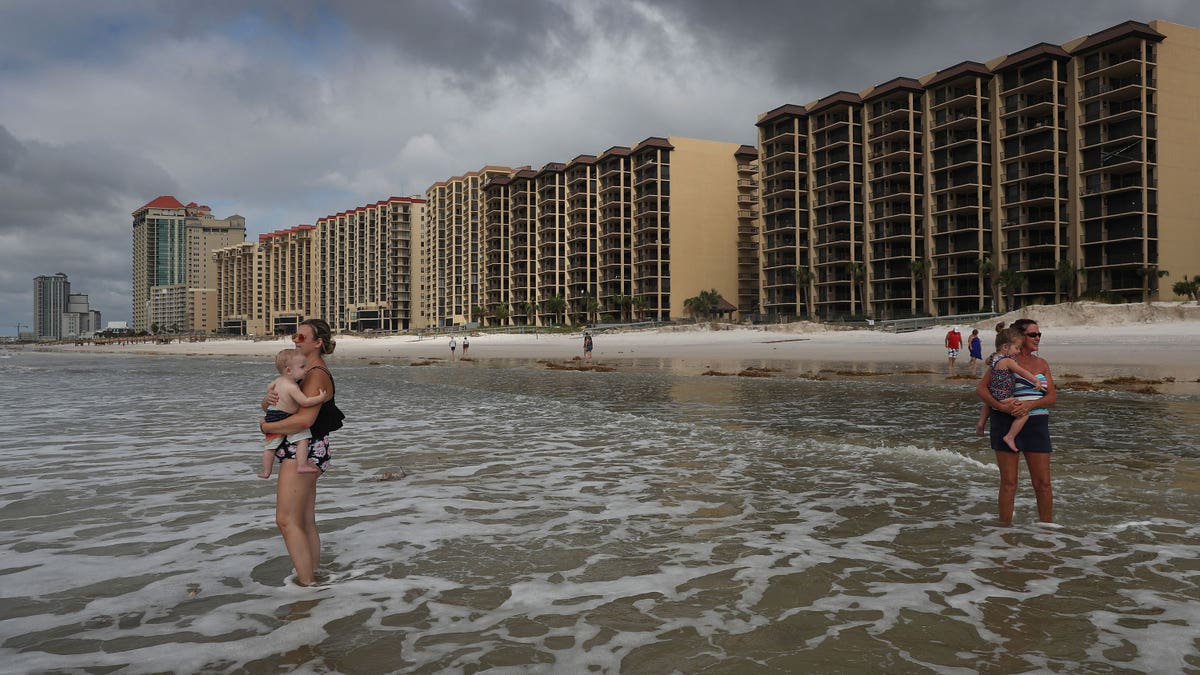
Families play in the water in Orange Beach, Alabama. Parents and other adults should pay special attention to children when at the beach, professionals advised. (Joe Raedle/Getty Images)
If someone else is caught in a rip current and you're standing on the beach, "communicate with the person," DeJong said.
"Advise the person to float or swim parallel to the shore and help keep [the person] calm while you call 911," he said.
6. Know that flotation devices don't always help
"A flotation device is not guaranteed to help you or your child escape a rip current," DeJong said.
CLICK HERE TO SIGN UP FOR OUR LIFESTYLE NEWSLETTER
"While it can help you stay afloat, it shouldn't be used as a way to circumvent the warning flags or lack of lifeguard."
7. Stay alert and aware near bodies of water
"If the open body of water is one a family is visiting, do your homework and learn about the location conditions to keep everyone water safe," Quintero said.
This is especially important if children are present.
STUDY: MOST KIDS DO OK AFTER ALMOST DROWNING
Drowning is the leading cause of death for children between the ages of 1 and 4 and the second leading cause of unintentional injury or death for children between the ages of 5 and 14, the Centers for Disease Control and Prevention (CDC) said on its website.
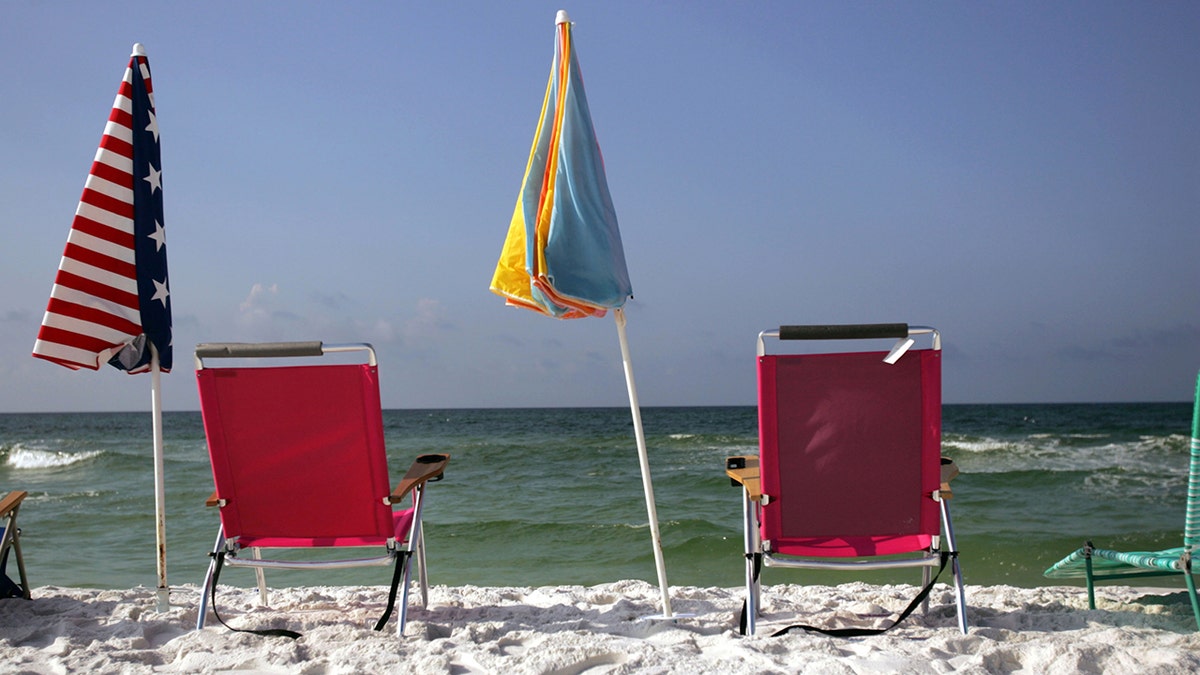
Parents should stay alert and aware of their children at all times and avoid things like reading and other distractions during trips to the beach, said one water safety expert based in California. (Spencer Platt/Getty Images)
"Adult supervision without any distractions such as cell phones, reading, etc. is one of the most important 'must haves'" of any beach trip, Quintero said.
She also said it's good to remember to pick up any trash you've created before leaving the beach.
For more Lifestyle articles, visit www.foxnews.com/lifestyle
"Leave the area better than you found it," Quintero advised.
"Keep our beaches clean and clear of litter that can be a safety hazard for humans and marine life," she added.






















